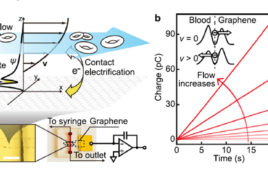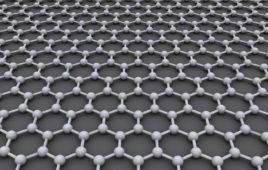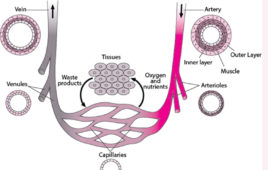What is graphene foam? It’s a synthetic “wonder material” made from the same carbon atoms that make up the lead in a pencil.
Graphene foam can be used as a “bioscaffold” to mesh with human stem cells and grow new cartilage. In addition to being incredibly strong, graphene foam conducts heat and electricity which helps neurons, or nerve cells, transmit information. Boise State University researchers believe graphene foam-enhanced cartilage could one day be used to treat the joint pain caused by osteoarthritis as well as prevent the need for joint replacement. Osteoarthritis is incurable and affects half the U.S. population over the age of 65.
“If we could take graphene foam, adhere a patient’s own stem cells on it then and inject that into someone’s knee to regrow their own cartilage, that would be the ‘pie in the sky,’” says Dave Estrada, co-director of the Boise State University’s Advanced Nanomaterials and Manufacturing Laboratory.
A Boise State team led by Katie Yocham, a doctoral student in the Micron School of Materials Science and Engineering, and Estrada have published a study, “Mechanical Properties of Graphene Foam and Graphene Foam-Tissue Composites,” in the Advanced Engineering Materials journal.
While earlier studies at Boise State have shown that graphene foam is compatible with cells for growing new cartilage tissue, this is the first study to investigate how that tissue would actually function in a human joint under normal stresses, including high impact activities.
Trevor Lujan, an associate professor in the Department of Mechanical and Biomedical Engineering, and one of the authors of the study, praised Yocham’s work.
“Katie’s strong efforts on this project have provided the biomedical community with a rigorous characterization of the bulk mechanical behavior of cellularized graphene foam. This baseline knowledge is an important step in the rising use of graphene foam for biomedical applications,” he says.
Estrada believes the biomedical use of graphene foam may have other applications, including in the military where a majority combat injuries involve the musculoskeletal system.
“Our vision is to develop novel bioscaffolds that can expedite healing, reduce the need for amputation, and help save lives,” he says.
Source: Boise State University




